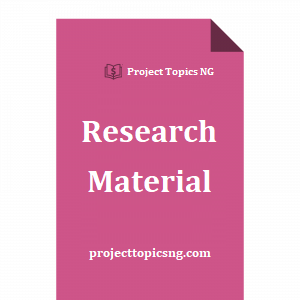Brief Introduction
Studies on the utilization of non-synthetic materials, especially of plant origin, have continued to increase since the advocacy for non-synthetic drug use in animal production, occasioned by residual effects of synthetic drugs (Iwuji and Herbert, 2012a). Various plant seeds, leaves, roots and other parts are being explored for their possible benefits and replacement of the synthetic materials used in animal production, with a possibility of achieving the same or improved effect as with synthetic materials.
These studies which involve different animal models are focused on different aspects of animal production which include nutrition, health, and physiology (Iwuji and Herbert, 2012b; Opara et al., 2012; Odoemelam et al., 2013). Numerous different plants have been well researched for their roles in the nutrition, health, and physiological functions of various types of livestock.
However, many are still scantly researched, while some remain untapped. The plant, Dalium guineense, although widely known for its fruit (Icheku); has not been widely researched for use in animal production. Studies involving the plant have focused more on the various compositions of the plant and its medicinal and pharmacological uses (Gnansounou et al., 2014; Besong et al., 2016), but there is a lack of information on its application in livestock production; especially with regards to nutrition, health and physiological functions of animals.
Dalium guineense, also called velvet taramind is a leguminous plant that usually grows in the wild with its description widely documented (Besong et al., 2016). Considering the enormous potential benefits recorded for this plant, it becomes imperative to utilize it in animal production for possible benefits, especially in this era of organic farming.
The rabbit industry in Nigeria has been described as emergent or rudimentary (Iwuji et al., 2017a) and rabbits have been adjudged to have the potential to fill the niche in animal protein needs of developing countries like Nigeria (Iwuji et al., 2017b). Therefore, more research studies in rabbit production are of paramount importance in elevating the rabbit production industry in Nigeria.
This study is then designed to evaluate the effect of Dalium guineense leaf meal on heamatological and serum biochemical characteristics of adult New Zealand White (NZW) rabbit bucks.
Table of Contents
CERTIFICATION ii
DEDICATION iii
ACKNOWLEDGEMENT iv
TABLE OF CONTENTS v
ABSTRACT vii
CHAPTER ONE 1
1.0 INTRODUCTION 1
1.1 Background of the study 1
1.2 Objectives of the study 2
1.3 Justification of the study 2
CHAPTER TWO 4
2.0 LITERATURE REVIEW 4
2.1 Origin of Dialium guineense 4
2.2 Botanical description of Dialium guineense 4
2.3 Ecology of Dialium guineense 5
2.4 Distribution of Dialium guineense 5
2.5 Composition of Dialium guineense 6
2.6 Uses of Dialium guineense 7
2.7 Antioxidant activity 7
2.8 Antimicrobial activity 8
2.9 Anti-hemorrhoidal activity 9
2.10 Anti-hepatotoxic activity 10
2.11 Rabbit production in Nigeria 10
2.12 Utilization of forage in animal nutrition 12
2.13 Factors affecting heamatological parameters of farm animals 12
2.13.1 Genetic Factors 13
2.13.2 Non-Genetic Factors 14
2.14 Haematological components and their functions 17
2.15 Normal haematological values for rabbits 19
CHAPTER THREE 21
3.0 MATERIALS AND METHODS 21
3.1 Location of experiment 21
3.2 Experimental animals and their management 21
3.3 Processing of test material (Dalium guineense leaves) 21
3.4 Experimental design and diet 21
3.5 Haematological and serum biochemical evaluation 22
3.6 Data analysis 22
CHAPTER FOUR 24
4.0 RESULTS AND DISCUSSION 24
4.1 Results 24
4.2 Discussion 27
CHAPTER FIVE 30
5.0 Conclusion and Recommendations 30
5.1 Conclusion 30
5.2 Recommendations 30
REFERENCES 31


